Cu Chi Tunnels: The Famous Historic Base Tunnels In Vietnam
An Overview of Cu Chi Tunnels Vietnam
The tunnels of Cu Chi are a historical relic attracting many domestic and foreign tourists. Below is some basic information about this place you should know before coming here.
Location

In Cu Chi Tunnels
The Cu Chi Tunnels are an extensive underground network located in Cu Chi, approximately 40 kilometers northwest of Ho Chi Minh City. The site includes a museum and various tunnels preserved and made accessible for exploration.
This place offers a firsthand glimpse into the harsh conditions and ingenious tactics employed by the Viet Cong during the war.
Historical Facts
Cu Chi Tunnels were built from 1945 to 1954 during theIndochina War against France. These tunnels were made in the jungle, connecting small villages. The goal was to help the Vietnamese military hide from the enemy.
In the Vietnam War in 1955, the tunnels got bigger and became a secret base for Communist troops. These tunnels did everything: hiding the military, moving supplies, giving medical care, and keeping safe from bombings.
During the resistance war against America, the tunnels were like a secret headquarters for planning strategies, including the successful offensive at the beginning of 1968.
Through all the tough times in Vietnam's past, these tunnels saw it all. They're a symbol of how strong the Vietnamese people are.
Now, these tunnels are a hot tourist spot. People from everywhere visit to see this piece of history and learn about Vietnam's strength and bravery.

Cu Chi In Vietnam War
Cu Chi Tunnels Map
The tunnels are an incredible underground system that used to be almost 250 km long, stretching toward Cambodia. Nowadays, about 120 km are open for the public to explore.
Above ground, there are clever traps and fake bunkers to trick enemies. The tunnel entrances are super narrow, made just for Vietnamese men, and they cleverly hid them with wooden covers under leaves.
Underground, there are three levels:
The first, about three meters down, could handle bullets and chemical weapons.
The second, six meters deep, could resist bombs.
The third, over twelve meters down, had escape doors and hidden vents for poison gas.
Inside, it's like an underground world with schools, hospitals, theaters, chambers, armories, and a military center.
A fascinating fact is that soldiers in this country dug this long system, hundreds of kilometers, entirely by hand and simple tools to deal with tough clay soil and laterite.
What to Explore in Cu Chi Tunnels?

What To Explore?
On this site, most visitors want to explore the tunnel system with many historical marks. Besides, there are many other attractions that you can visit to have a meaningful historical journey.
Tunnel System
Coming to Cu Chi Tunnels, you can’t help but explore the tunnel system that has made this place famous. This system has two main areas, Ben Duoc and Ben Dinh.
Ben Dinh

A Tunnel In Ben Dinh
Entrance fee: 90,000 VND/person
Tunnels in Ben Dinh are busy spots (an hour by car from the city center), all reconstructed for visitors. It's by the river named Saigon, where leaders in Cu Chi would guide troops and find safety in emergencies between 1968 and 1975.
The adventure begins at the entrance. The first encounter is a hut that serves as a prelude to the historical expedition. You'll find maps, tunnel layouts, and old videos showing the area's history.
Moving beyond the hut, the journey takes a turn into the dense jungle. Local guides will talk about dangerous traps and pits here. The path is a ladder with the echoes of history, and the air is thick with wartime stories.
Then, you can take the underground journey, about 40-60 minutes, showing old stuff in the tunnels, cool demos, and stories about the people who lived there.
Inside the tunnels, the air is cool, and the dim lighting adds to the ambiance, transporting you back in time.
Ben Duoc

A Tunnel In Ben Duoc
Entrance fee: 100,000 VND/person
The tunnels in Ben Duoc (1.5 hours by car from the city center) are five times larger than in Ben Dinh, not as crowded, but more adventurous. It's like an underground Saigon.
The tunnels are made safer now with lights and exits every 10m, but it can be challenging, so be prepared to overcome difficulties when exploring Ben Duoc.
Many visitors said that when exploring these tunnels, crawling through cramped spaces, and feeling a bit scared, they understood how tough it was for soldiers in the war.
Because Ben Duoc and Ben Dinh are in two areas about half an hour away from each other, you are probably wondering which one to visit.
In fact, both are historical sites that offer experiences associated with the war period. Whichever you visit, you will have meaningful moments.
The only thing you have to consider is travel time. Choose whichever suits your itinerary. Or, if possible, visit both to understand more about this monument!

In A Tunnel
War Zone Reenactment Area
Entrance fee: Free
The War Zone Reenactment Area reenacts the most challenging years of the war of 1961-1972 in the southern region of Vietnam. It's a small underground bunker with a big screen and basic seats.
Here, you get to watch valuable war footage, showing the daily life and battles of our soldiers and people. Some scenes are from documentaries, while others are recreated to make you feel like you're back in those tough times.
This area has three smaller spaces, each showing different aspects of the life of our soldiers and locals in Cu Chi during wartime.
The first space
The first space reveals the liberated areas from 1961 to 1964, where people in Cu Chi were full of hope and confidence.
They joined the revolutionary movement with enthusiasm. It shows the daily life, fights, work, education, and activities of the people and revolutionary forces in the liberated Cu Chi.
The second space

Cu Chi In 1968
Moving on to the second space, telling stories from 1965 to 1968, you see the harsh attacks by the enemy on Cu Chi.
The scenes show destroyed villages and the challenging life of the people during the war. Bombs ruined homes and temples. But even in the ruins, you see the strong spirit of Cu Chi residents fighting to protect their homeland.
The third space
The third space takes you to the worst times from 1969 to 1972. It portrays Cu Chi becoming an enemy-occupied zone, facing toxic chemicals, bombs, and artillery.
The reenactment shows a once-thriving land turned into a barren place. The images are haunting, with no homes, doors, or life on the surface but only the remains of tanks, planes, and bulldozers.
You’ll watch how the life and activities of Cu Chi guerrilla forces and other military units moved underground.
Exploring this reenactment area, you'll understand the losses and sacrifices of the people here during the war. So, don't miss this experience when coming here!
Wild Animal Rescue Station

Otters In Cu Chi
Entrance fee: Free
The Wild Animal Rescue Station is between Ben Duoc and Ben Dinh. Spanning 4,000m2, it's the biggest rescue center in the southern region of Vietnam.
Founded in 2006, this station is a response to the urgent need to protect over 5000 rare animals facing extinction in Vietnam.
The station is a safe haven for creatures that have been mistreated, trapped, and confined. It stands as a symbol of our responsibility to the diverse wildlife in our homeland.
From the entrance, the station is enveloped by dense foliage. The pathways wind through enclosures. Each corner has informational placards providing insights into the native species and ongoing conservation efforts.
Walking through, you'll encounter various wildlife, from rare birds to endangered mammals. You'll learn why we need to conserve nature and how delicate the balance between humans and wildlife is.
Going deeper, you might encounter caretakers providing enrichment for the animals. Don't hesitate to engage with the staff, ask questions, and participate in educational sessions.
What's special is that your visit to this station is a way to actively help. The money from tourism goes directly to supporting the station's operations.
You are joining hands in essential work like rehabilitating animals, conducting research, and educating the public.
Fruit Garden

In A Fruit Garden
Entrance fee: 30,000-50,000 VND/person
Exploring the fruit gardens near the tunnels will bring a bit of sweetness to your historical journey. Imagine walking through these beautiful orchards, with the air filled with the sweet smell of ripe fruits.
The fruits in the southern region of Vietnam, especially in Cu Chi, are famous for their sweet and succulent tastes.
There are many fruit gardens around the tunnels. Just ask the locals for directions to one nearby. They will be happy to show you the way. The most famous ones are Trung An and Bay Trieu Gardens.
As you enter the garden, the first thing that captivates your senses is the aroma of a harmonious blend of sweetness and freshness.
There, you'll find various Vietnamese specialty fruits like rambutan, durian, jackfruit, plum, and mangosteen.
What makes this journey special is that you can taste them right in the garden. Armed with a basket or a bag, you can pluck ripe fruits directly from the trees.
Beyond just tasting fruits, you'll have the opportunity to learn about local farming. You can discover how these fruits are grown, understand when they're in season, and learn about their importance to Cu Chi's culture and economy.
You can even pick your own fruits to take home. They will be precious gifts for your loved ones.
What Can You Do In Cu Chi Tunnels?

What To Do?
Besides historical traces, this place offers visitors various activities that delve into the region's wartime history. There are also entertainment and relaxation activities. Here are some notable things you should try when visiting this place:
Shooting
In both Ben Duoc and Ben Dinh, you can try shooting activities in the shooting areas. There are two types to choose from: military sports shooting and paintball shooting.
Military sports shooting
If you go for military sports shooting, you get to use rifles, and there are instructors to guide you on how to handle and shoot them.
You do not buy tickets to play this game, but you'll pay for bullets at about 40,000-60,000 VND/one. The staff's careful instructions ensure everyone, whether new to shooting or not, can enjoy the activity safely.
The guns used are the real deal from wartime, connecting you with history. You'll shoot at animal-shaped targets under the watchful eye of the staff.
The crackling sound of gunfire reverberates within the shooting ranges, creating an immersive atmosphere reminiscent of the soldiers' challenges.

Military Sports Shooting
Paintball shooting
On this site, there's paintball shooting for those looking for a more colorful and strategic adventure. The game costs 250,000 VND/team.
Set against the forests of Ben Duoc and Ben Dinh, you'll find paintball battles adding a level of strategy and teamwork because you can strategize, coordinate, and have friendly competitions.
In a forest, the natural setting provides an immediate sense of adventure, with towering trees, dense vegetation, and uneven terrain.
You'll first gear up with the essential paintball equipment, including masks, overalls, gloves, and, of course, the paintball markers loaded with colorful ammunition.
The scene for each shooting game will look like this: The game starts with the echoing sound of the starting whistle, and players disperse into the forest, instantly becoming immersed in the dynamic and unpredictable terrain.
Navigating the forest becomes thrilling as you dart between trees, leap over fallen branches, and seek cover behind natural obstacles. The sounds of laughter and shouts of excitement create a fun and friendly atmosphere.
Go Canoeing
Do you want to be in a canoe, gently cruising down the Saigon River, surrounded by the greenery of Cu Chi?
Instead of the usual bus or walking tours, canoeing gives you a fresh and watery perspective on Cu Chi. You can find some canoe rental locations right near the river in Ho Chi Minh City. A canoe tour costs about 2,000,000 VND.
On the canoe, the gentle rocking, the sound of paddles in the water, and the open view of the river create a sense of adventure. You can take in the sights and embrace the soothing sounds of the river.
As you paddle along, you'll catch glimpses of the Wild Animal Rescue Station, historical landmarks, and the dense greenery. On the canoe, you’ll have many beautiful Cu Chi Tunnels photos.
When you close your eyes and immerse yourself in the journey, you will hear the gentle rustling of leaves, the occasional call of a distant bird, and the soothing sounds of the river.
If you experience this activity with your friends, the fun will multiply. Conversations flow, laughter echoes on the water, and the shared enjoyment of the journey becomes a memorable part of your adventure.
Swimming
Once you've explored the tunnels and had your share of shooting activities, consider taking a dip in the swimming pool in the area to refresh. The ticket for this activity is just 20,000 VND/person.
The pool, designed to simulate the vastness of the East Sea, sits amidst a scenic landscape, creating a tranquil retreat within the bustling historic site.
To get to the pool, you take a short 15-minute walk through a scenic area. Along the way, you'll see models of iconic structures representing different regions, such as:
One Pillar Pagoda
Gate of Noon
Ho Chi Minh Museum at the Dragon Wharf
These models are set against the backdrop of lush woodlands. Once you reach the pool, the clear water is an inviting sight, especially after the physical activities in the tunnels.
Surrounded by greenery, you might find yourself momentarily transported to a coastal retreat, even though you are in the heart of a historical site.
Play Duck Boat Pedaling
Pedaling on a duck boat through the clear waters of the swimming pool on this site will take the excitement of your water activities to a whole new level.
You'll steer a playful duck-shaped boat. These boats are designed for both solo adventurers and those who love to share the fun. So, whether you're flying solo or pairing up with your friend, you can get on a boat and begin your adventure.
Haven't played this game yet? Don't worry! You just need to sit still and use your foot to step on the pedal according to the staff's instructions.
The boat's design ensures stability and ease of control. So, it's accessible for individuals of all skill levels, from beginners to seasoned water enthusiasts.
Kayaking

Kayaking
Kayaking in the swimming pool in this place is a unique and exhilarating experience that deviates from the traditional setting of paddling down a river.
In most cases, kayaking is associated with natural bodies of water like rivers and lakes. But at this particular pool, you'll have the opportunity to indulge in this water sport in a setting that is both unexpected and delightful.
You can find individual and tandem kayaks in the equipment rental area. Choose the one that suits your needs, whether you want a solo expedition or prefer to share the kayak with a friend.
Cycling
When entering the pool area, if you don't want to swim, you can rent a bicycle to ride on the path around the pool. You'll cruise by the pool with crystal-clear water and immerse in the chill surroundings.
Interestingly, you can choose to go alone on a bike or team up for a tandem adventure. The tandem bike option is perfect for friends, couples, or family members looking to bond over a memorable cycling adventure here.
And don't worry if you're not a professional cyclist; this route is for everyone. There are no crazy hills, just a smooth ride that lets you focus on the beautiful views without breaking a sweat.
Take your time to feel the breeze in your hair, the sound of water from the pool, and the pops of color around you.
As you embark on your kayaking journey in the pool, the serene atmosphere of the pool brings a different dimension to the experience. It differs from the unpredictable currents and natural surroundings of a river.
The tranquility in this place allows you to appreciate the rhythmic paddling and the gentle movement of the kayak. You can focus more on the nuances of your paddling technique.
Mekong Delta Tours from Ho Chi Minh to Paradise of Phu Quoc island
- Depart Time:Daily
- Starts/Ends:Ho Chi Minh/Ho Chi Minh
- Tour type:Private Tours
- Age range:1 To 90 Years
- Operated in:English, French, Spanish, German, Italian
Go Picnic
Picnicking is an opportunity to create joyful moments with friends or family. Imagine setting up a picnic by the river, surrounded by the historical landscape of Cu Chi. Sounds great, isn't it?
To have a mini camping by the riverbank, pack your favorite snacks, camping gear, and some games for a delightful time with your loved ones. It's a chance to bond, share laughs, and make lasting memories against the backdrop.
When looking for a spot for your picnic, seek out ones with natural shade, such as trees or overhanging branches. This way, you'll have a comfortable environment, especially if you're visiting during warmer seasons.
Besides, I recommend choosing a spot close to facilities such as restrooms or waste disposal areas. It's convenient for your group to access necessary amenities during the picnic.
While you indulge in delicious bites, the serene waters of the river create a tranquil setting for your gathering. The riverbank becomes your private oasis, a place to unwind and enjoy life's simple pleasures.
The echoes of the past, the greenery, and the river flowing by create an ambiance that adds depth to your picnic experience.
After the meal, consider engaging in outdoor games or leisurely activities that amplify the fun, for example, frisbee, a friendly game of catch, or simply lounging and enjoying the scenery.
How Can You Go To Cu Chi Tunnels?

How Can You Go To Cu Chi Tunnels?
Because Cu Chi is only about 40 km from Ho Chi Minh City center, you can get here by bus, taxi, speedboat, or personal vehicle.
By bus
The most economical option is taking a bus. Start by boarding bus Number 13 from 23/9 Park to the bus station in Cu Chi.
From there, switch to bus Number 79, heading to Ben Duoc. The journey takes approximately 1.5 hours, costing just over $1.
By taxi
For convenience, taxis are available, and you can book one online using apps like Grab or find them on the streets. While it's the most comfortable option, it's the most costly, with a fare of around $60.
By private car/motorbike
If you prefer flexibility, using your own (or rental) car or motorbike is a viable choice. The journey will take about an hour from the city center to Ben Dinh.
By speedboat
For a scenic and unique journey, consider taking a speedboat. Departing from Tan Cang, the boat traverses the Saigon River, reaching Cu Chi in an hour. Morning departures at 7:30 am are available daily.
Each transportation method above offers a distinct experience. Just choose one based on your preferences, budget, and desire for adventure.
Tips For Visiting Cu Chi Tunnels

Traveling Tips
To ensure you make the most of your visit, here are some crucial tips to guide you through this experience:
Comfortable clothing is key
You'll have a fair amount of exploration on this site, including crawling through narrow passages. So, opt for lightweight, breathable clothing and comfortable shoes.
Stay hydrated
Vietnam's tropical climate can be demanding, especially during outdoor explorations. Remember to carry a water bottle to stay hydrated throughout your visit.
Bring insect repellent
The tunnels are in a jungle setting, making them prone to mosquitoes and other insects. Slap on some insect repellent; you'll protect yourself from those bites.
Watch your head as you navigate through the underground passages
The tunnels are ingeniously crafted but compact. They're designed to accommodate the average height of a Vietnamese person, so taller visitors may need to crouch slightly.
Souvenir shopping tips
Planning to snag some souvenirs? You can find them in the on-site shops here. Prices are laid out. So you can pick up cool mementos without breaking the bank.
Guided tours enhance the experience
Consider joining a guided tour for a comprehensive understanding of the tunnels' history.
At Asia Tour Advisor, we have knowledgeable guides to provide valuable insights, sharing stories about wartime struggles, survival tactics, and the significance of the tunnels in Vietnamese history.
Cu Chi Tunnels Tours At Asia Tour Advisor

Tours At Asia Tour Advisor
Looking for a travel agency to help you plan and arrange everything for this trip?
Lucky you! The Cu Chi Tunnels tour collection of Asia Tour Advisor offers a unique blend of historical exploration and cultural immersion. Here are some best-seller options you should consider:
Pack your bags for a 12-day family escapade across Vietnam! This tour is tailor-made for families, offering a bit of everything, from landscapes to culture; and, of course, a visit to Cu Chi Tunnels.
It's the best tour if you want an interactive experience for the whole family!
10-Day Vietnamese Culture Tour
Join us on a 10-day journey into the heart of Vietnamese culture. From buzzing markets to ancient traditions, this tour covers it all.
And yes, Cu Chi Tunnels are on the list! Be ready to dive into the stories of resilience and triumph that shaped Vietnam!
Highlights of Vietnam 10 Days
- Depart Time:Daily
- Starts/Ends:Ho Chi Minh/Hanoi
- Tour type:Private Tours
- Travel Style:Heritage Tours, Family Tours, Culture & History
- Activities:Walking tours, Sightseeing Tours, Cultural, religious and historic sites tours, City sightseeing tours
- Suitable for:Solo, Family, Group, Couple
- Age range:1 To 90 Years
- Operated in:English, French, Spanish, German, Italian
For the ultimate adventure, this 14-day tour covers both Vietnam and Cambodia. In this tour, Cu Chi Tunnels serve as a historical bridge connecting these two incredible countries.
Get ready to explore iconic sites, enjoy local flavors, and create memories that cross borders!
Immerse yourself in Vietnam's rich cultural tapestry with our 12-day tour. This journey is about heritage sites, ancient temples, and Cu Chi Tunnels. You'll feel the pulse of Vietnam's history as you walk through these underground passages.
With these tours, Asia Tour Advisor is your companion for an eye-opening adventure through Vietnam. Book your tour now, and let the stories of the past come to life before your eyes!
FAQs
Are Cu Chi Tunnels Worth-Visit Places?
Absolutely! Cu Chi Tunnels are a must-visit because they help you learn about Vietnam's wartime history and experience going through tunnels like real soldiers.
The intricate tunnel system, booby traps, and the resilient spirit of the Vietnamese people make it a fascinating and educational destination.
Where Can You Stay In Cu Chi Tunnels?
Although the tunnel area does not have an area for visitors to stay overnight, you can find lodging options in nearby Ho Chi Minh City. There's a range of hotels and guesthouses catering to different budgets.
What Should You Eat When Going To Cu Chi Tunnels?
Must-try local Cu Chi cuisine includes banh mi, young jackfruit mixed with meat, field frog stir-fried with lolot leaves, fresh bamboo shoots, cassava steamed with coconut milk, and many other delicious dishes.
Conclusion
Delving into the depths of Cu Chi Tunnels is an immersion into the resilience and ingenuity of a nation at war.
These tunnels, etched into the soil of Vietnam, stand as silent witnesses to the indomitable spirit of the Vietnamese people during the wars.
Beyond the intricate design and strategic alliance, Cu Chi Tunnels encapsulate the untold stories of survival, sacrifice, and triumph. So, if you come to Vietnam, stop by this place to get a ticket back to the past.
Asia Tour Advisor is always ready to support you so you have the most meaningful and comfortable trip. Contact us now if you have any questions about our tours!
You may also like

Vietnam travel tips - The pathway to a perfect trip
Traveling to a new place especially for the first time can be quite demanding, due to human anxiousness...

Is Vietnam safe to travel? An advice to upcoming travelers
It is trite knowledge that Vietnam has some of the most beautiful and breathtaking landscapes as well...

A guide to choose between Private tours and Group tours
It is often a challenge deciding between a private or a group tour, especially for first timers. Some...
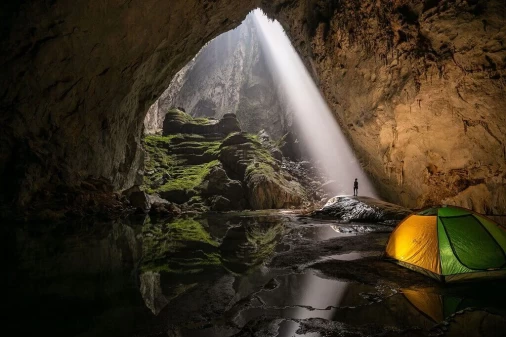
Central Vietnam Itinerary - An amazing Guide to the Perfect Tour
Having on standby the right key to navigate through central Vietnam is like a dream come true especially...
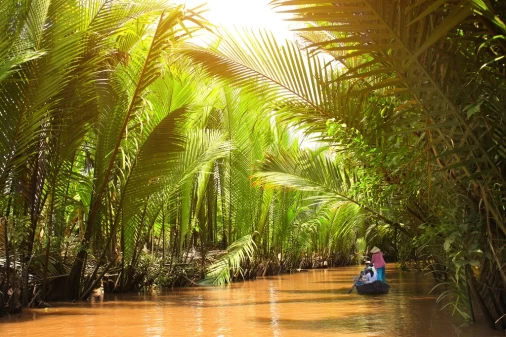
South Vietnam Itinerary- A treat to an impeccable beauty
Explore the Southern part of Vietnam as you treat yourself to the best parts only. Get to experience...

North Vietnam Itinerary - A comprehensive Guide to explore the North
Northern Vietnam is a region of aesthetic sceneries and landscapes with practically fascinating cultures...
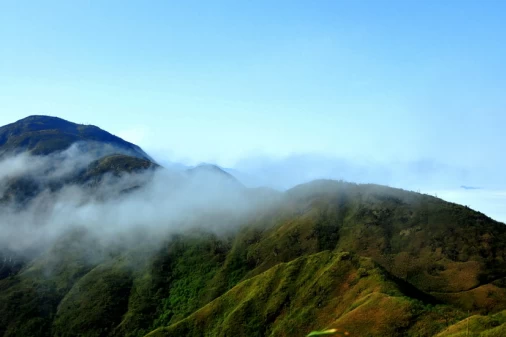
Fansipan Mountain - A solemn structure of Vietnam’s pinnacle
Explore an exciting journey with either a cable car or by hiking as you rise about 3,143 meters above...
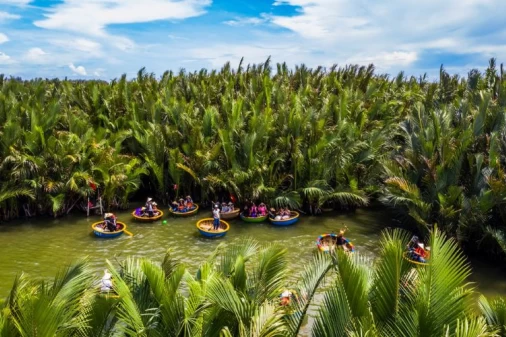
Bay Mau Coconut Forest - A fast rising destination for tourists
Bay Mau coconut forest is a very famous ecotourism site in Hoi An as well as the whole of Vietnam. It...
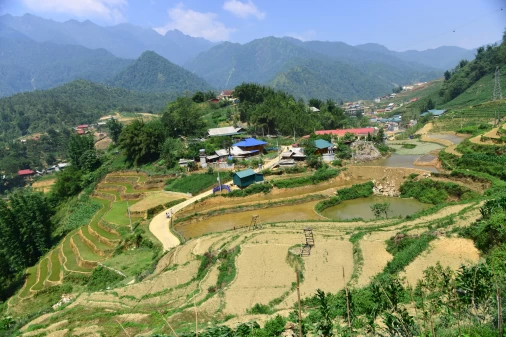
Y Linh Ho Village - Navigating The Charming North of Vietnam
Y Linh Ho village is a destination that is absolutely unique amongst the various tourist attractions...
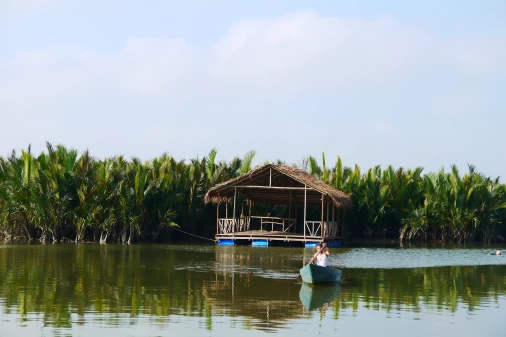
Explore Cam Thanh coconut village - The most exciting place in Hoi An
A breathtaking countryside located about 3 km from Hoi An, Cam Thanh coconut village is a definite place...
 France
France  Spain
Spain  German
German  Italian
Italian 



 Vietnam Tours
Vietnam Tours  Cambodia Tours
Cambodia Tours  Myanmar tours
Myanmar tours  Thailand Tours
Thailand Tours  Laos Tours
Laos Tours